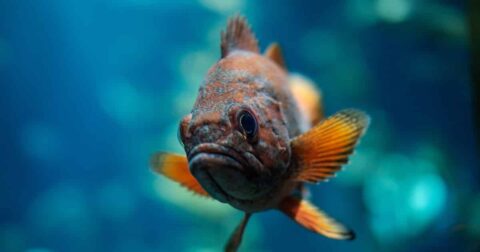News
Slaughterhouses Harbor Antibiotic-Resistant Bacteria That Give People Urinary Tract Infections
Food•6 min read
Perspective
Major gaps exist currently in what “animal welfare” means for aquatic animals. The Aquatic Life Institute is leading the effort to help define what this looks like.


Words by Christine Xu
Every year, approximately two to three trillion aquatic animals are killed in the wild and 100 billion are farmed in high suffering conditions, with aquaculture being the fastest growing food sector. But there is still a major gap in the public’s understanding of aquatic animal welfare. The Aquatic Life Institute (ALI) is leading a new effort to define what aquatic animal welfare looks like by spearheading research and forming the first-ever coalition for aquatic animal welfare.
ALI’s work comes at a critical juncture. Researchers have found that aquatic animals are sentient beings and deserve the same welfare protections as terrestrial animals. Together with global experts, ALI has created a first-of-its-kind, comprehensive guide to welfare for wild and farmed aquatic animals. Below is a brief overview of the five pillars while more details are available here:
This groundbreaking research has formed the basis of ALI’s advocacy work, focused on some of the largest product certification programs in the world because the majority of the world’s “sustainable” fish labels do not cover animal welfare. In fact, ALI created the Aquatic Animal Alliance (AAA)—a coalition made up of leading animal protection organizations—to do just that: advocate for change with a collective voice and to ensure that industry follows through.
“We want all labeling schemes to take into account the welfare of aquatic animals required in the entire chain of aquaculture production, including cleaner fish, feeder animals, and broodstock, as well as the process of catching fish in the wild used for aquaculture and livestock feed,” said Becky Jenkins, Executive Director of ALI.
This year, the AAA has already submitted joint feedback to some of the most widely used labeling schemes in the world, urging them to incorporate aquatic animal welfare into their standards. The schemes include GlobalG.A.P., Best Aquaculture Practices, and Aquaculture Stewardship Council.
“This is just the beginning of a coordinated movement to draw attention to and improve existing fish product certification standards,” said Jenkins.